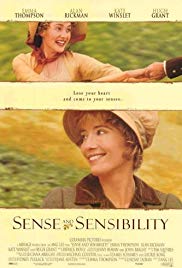Selected Awards: 1996 Academy Awards: Best Writing; British Academy Awards:Best Picture, Best Actress (Thompson), Best Supporting Actress (Winslet); 1996 Academy Awards Nominations: Best Picture, Best Actress (Thompson), Best Cinematography, Best Supporting Actress (Winslet), Best Costume Design, Best Music; British Academy Awards Nominations: Best Cinematography, Best Supporting Actress (Spriggs), Best Supporting Actor (Rickman), Best Adapted Screenplay, Best Director (Lee), Best Costume Design, Best Music; Best Make-up.
This film won many additional awards.
Featured Actors: Emma Thompson, Kate Winslet, Alan Rickman, Hugh Grant.
Director: Ang Lee.


